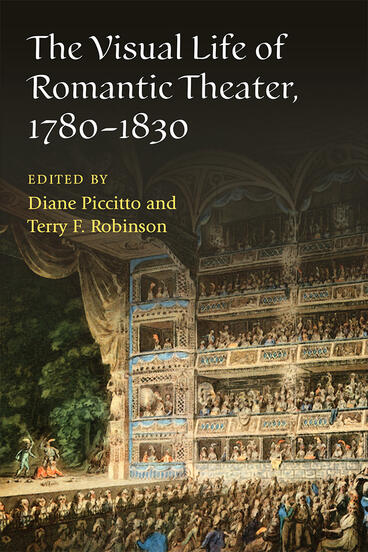The Visual Life of Romantic Theater, 1780-1830
Provides fresh perspectives on the Romantic era through a focus on the visual nature and impact of the stage
Description
The Visual Life of Romantic Theater examines the dynamism and vibrancy of stage spectacle and its impact in an era of momentous social upheaval and aesthetic change. Situating theatrical production as key to understanding visuality ca. 1780-1830, this book places the stage front and center in Romantic scholarship by re-envisioning traditional approaches to artistic and social creation in the period. How, it asks, did dramaturgy and stagecraft influence aesthetic and sociopolitical concerns? How does a focus on visuality expand our understanding of the historical experience of theatergoing? In what ways did stage performance converge with visual culture beyond the theater? How did extratheatrical genres engage with theatrical sight and spectacle? Finally, how does a focus on dramatic vision change the way we conceive of Romanticism itself? The volume’s essays by emerging and established scholars provide exciting and suggestive answers to these questions, along with a more capacious conception of Romantic theater as a locus of visual culture that reached well beyond playhouse walls.
Diane Piccitto is Associate Professor of English at Mount Saint Vincent University.
Terry F. Robinson is Associate Professor of English and Drama at the University of Toronto.
Reviews
“Reading this collection was a rare pleasure. Each of these wonderful essays models, often self-consciously, the challenges and rewards that engagement with this archive brings. Rather than rehearse ‘the same anecdote of irretrievable loss’, to borrow Joseph Roach’s characterization of much theater history, the contributors to this collection find thrilling epistemological potential in thinking anew about various theatrical media (newspapers, watercolors, playtexts, engravings, diaries, caricatures, playbills, set designs, toy theaters) less as records of performance than as themselves a still-live repertoire.”
- David Francis Taylor, Associate Professor of English, University of Oxford
“The volume’s thesis, that a substantive investigation of spectacle and the visual elements of Romantic theatre force us to reconsider the primarily textual theses that govern the idea of Romanticism, is both timely and needed. Its transdisciplinary approach, rooted jointly in performance studies and theatre history, promises to reassess the oft-denigrated 6th category of Aristotelian dramatic analysis and unpack spectacle’s aesthetic, political, and cultural significance, both on and off the stage. These are the most important voices in later-eighteenth-century and Romantic theatre studies, and to have them assembled promises readers that this will not just be a collection but a field-defining conversation.”
- Misty G. Anderson, James R. Cox Professor of English, University of Tennessee
“A field-shaping collection of essays that unveil the lost delights of Romantic-era theatre culture: playbill typography, costume trimming, souvenir fans, toy theatres, stage makeup, mimodrama, and scene maquettes. Through their wide-ranging analyses, the contributors reanimate the stage productions that thrilled Romantic theatre-goers.”
- Judith Pascoe, George Mills Harper Professor of English, Florida State University

